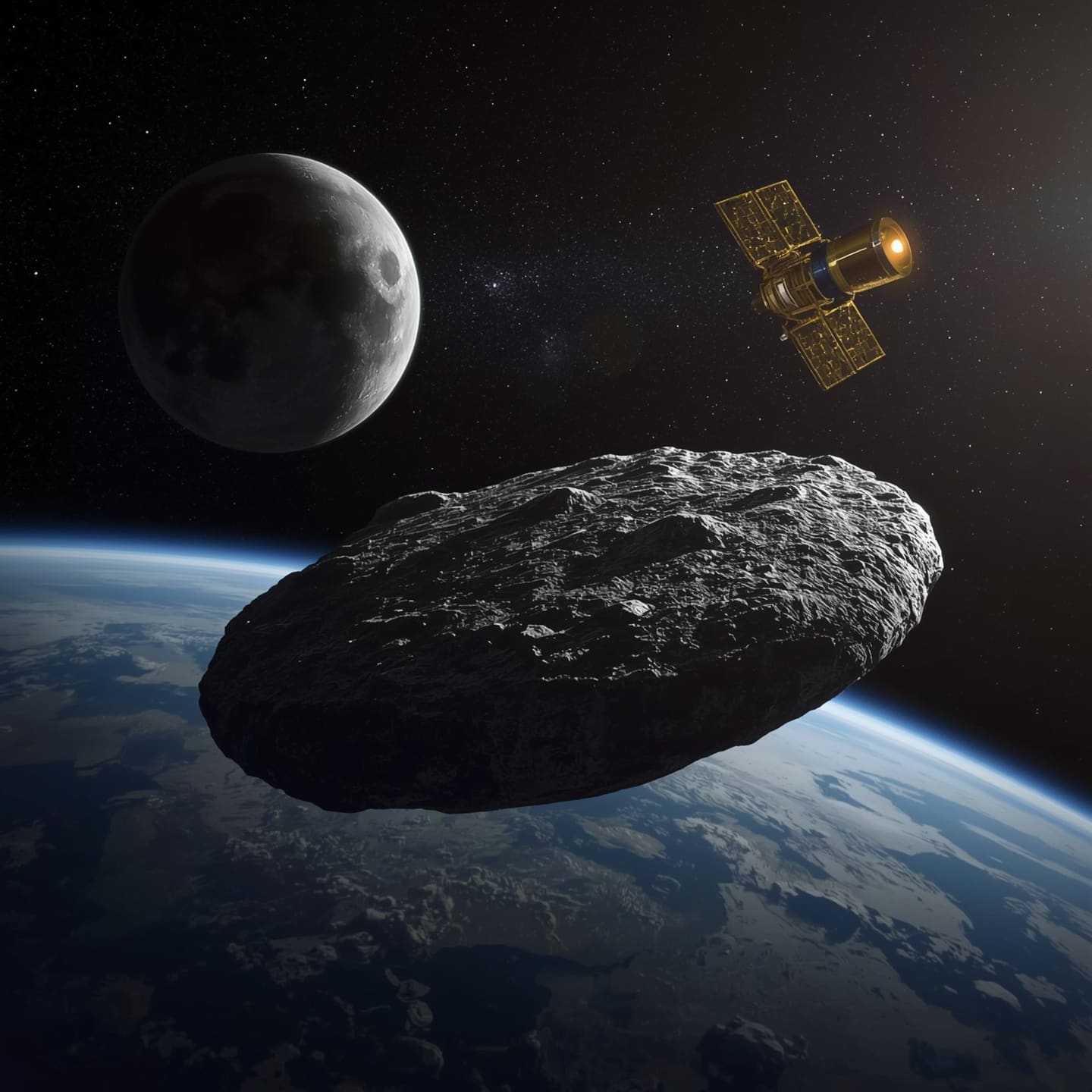Asteroid 2024 YR4: Hockey-Puck Shape and Surprising Origins

Introduction
When asteroid 2024 YR4 first appeared in late 2024, its brief stint on NASA’s hazard list made global headlines. Subsequent tracking ruled out an Earth impact, but scientists never lost interest. A new three-dimensional model from Chile’s Gemini South telescope now reveals that YR4 is shaped less like a potato and more like a hockey puck — a flat, disk-like body spinning once every 20 minutes. Researchers also traced its origins to the inner asteroid belt, likely nudged sunward by Jupiter’s gravity.
The findings, announced by the National Optical-Infrared Astronomy Research Laboratory (NOIRLab), deepen our understanding of YR4’s physical properties, refine its size to 30–65 meters (with Webb data favoring ≈ 60 m), and keep alive a tantalizing few-percent chance of a lunar impact on 22 December 2032. Such an event would pose no danger to Earth yet offer a unique test of how crater size scales with projectile mass.
Discovery and Early Hazard Phase
27 December 2024: The ATLAS survey in Chile spots a faint object cruising away from Earth barely two days after a flyby twice the Moon’s distance. Provisional designations give way to 2024 YR4.
February 2025: Orbital uncertainties produce a worrisome 3.1 % Earth-impact probability for 22 December 2032, briefly crowning YR4 the “most dangerous asteroid” of the modern tracking era. For several weeks it tops NASA’s Sentry Risk Table and ESA’s Impact Risk List — unusually long for a fresh discovery this size.
Late February 2025: Additional astrometry drops Earth risk to nearly zero but leaves a Moon-strike window open at ~ 4 %. The Torino Scale rating falls from Level 3 (requiring public attention) to Level 1 (normal).
Why the Gemini Campaign?
Even after Earth was cleared, researchers wanted better constraints on:
- Shape — key for thermal modeling and YORP torque studies.
- Rotation period — informs structural integrity (rubble pile vs. monolith).
- Size — directly influences crater energy if it ever does collide with the Moon.
Gemini South’s 8.1-m mirror and fast-readout detectors were ideal for capturing high signal-to-noise lightcurves before YR4 faded beyond ground-based reach.
Constructing a 3D Model
Lightcurve inversion techniques translate brightness variations into a three-dimensional shape:
- Multi-filter imaging (visible to near-IR) every few minutes as YR4 rotates.
- Phase-angle diversity: Observations from different Sun–target–observer angles.
- Fourier analysis to extract periodicities and amplitude.
- Convex-hull algorithms to rebuild the silhouette that best matches the data.
The result: a flattened ellipsoid just ⅓ as tall as it is wide, resembling a spinning hockey puck more than a typical lumpy asteroid.
A Hockey-Puck in Space: Shape and Spin
Most sub-100-m asteroids fall into three categories:
- Potato-like rubble piles (randomly shaped, slow rotators).
- Top-shaped fast rotators (equatorial b